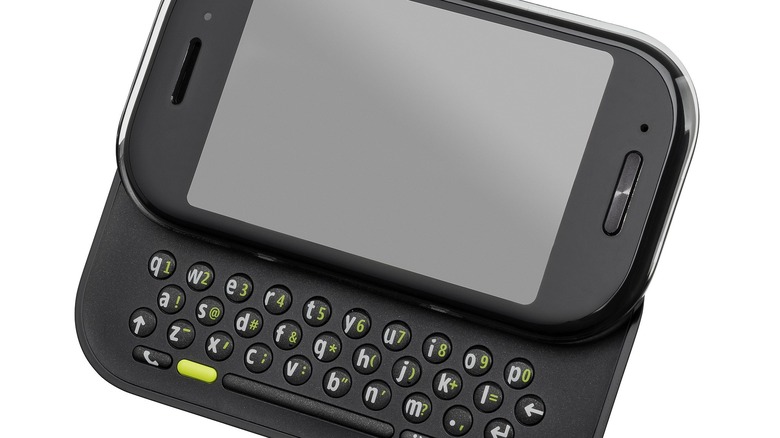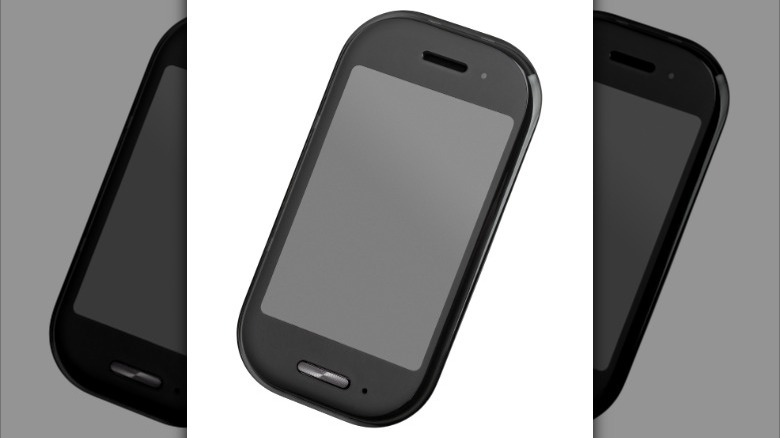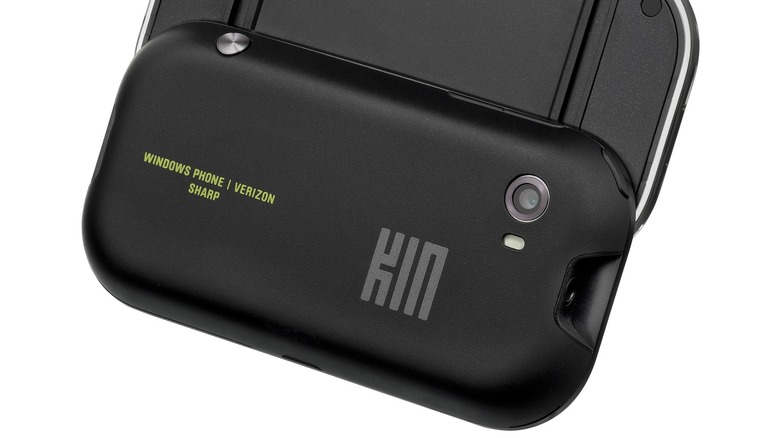The Short-Lived Life Of Microsoft Kin: What Went Wrong
Microsoft has most recently been in the spotlight for catapulting its lagging Bing search engine back into relevance by incorporating a new ChatGPT-based AI called (what else?) Bing Chat. But back in 2010, Microsoft made a different type of bid to stay current. It attempted to win over teenagers and other social media addicts with a new youthful brand of phones called Kin.
In what has to be one of the biggest flops ever, the Kin phones were discretely killed off after only six weeks on the market. By all accounts, less than 10,000 units total were sold and some insiders insist that figure is more like 500 units. And no, that's not a typo.
The devices — called Kin One and Kin Two — were manufactured for Microsoft by electronics giant Sharp Corporation. While not quite full-blown smartphones, the Kins did have a rudimentary browser as well as widgets for accessing social networking sites, like, um, Myspace.
Kin One had a 2.7-inch display and 4GB of memory, while Kin Two had a larger 3.5-inch display and 8GB of memory. Both Kin phones had slide-out keyboards and were available exclusively with a voice and data plan from Verizon Wireless.
[Featured image by Evan-Amos via Wikimedia Commons | Cropped and scaled | Public Domain]
The data plan was too pricey
At launch, the smaller Kin One was advertised at $50 while the larger Kin Two cost $100. A few weeks later those prices were slashed to $29 and $49, respectively. Not too bad, right? But there was a catch.
In order to realize these advertised prices, buyers had to jump through a few hoops. The amount paid at point-of-sale was actually $150 for Kin One or $200 for Kin Two. The buyer could then apply for a $100 rebate that was received in the form of a debit card. In other words, a cumbersome process that involved shelling out additional cash upfront and waiting for a rebate, assuming that the rebate paperwork was submitted properly, or at all.
Price gimmicks notwithstanding, what really helped sink the Kins was a mandatory two-year contract with Verizon Wireless at a lofty price of $70 per month for voice and data combined, which is equivalent to $96 per month in today's dollars. That's a lot of money for a student — who perhaps has a part-time job flipping burgers — to fork over to a cellphone company every month. Yet, such a person was precisely Kin's target demographic.
[Featured image by Evan-Amos via Wikimedia Commons | Cropped and scaled | Public Domain]
Too little, too late
According to Engadget, Microsoft wasted up to 18 months during Kin's development process by vacillating between several different operating systems. Because of the continued delays, Kin's launch partner, Verizon Wireless, started losing interest in the deal and when the time finally arrive to bring the devices to market, Verizon was no longer willing to offer the attractively priced service plans that were initially discussed.
Besides managing to frustrate their carrier partner, 18 months is simply an eternity when it comes to the progress of technology. Between conception and launch, there emerged a plethora of competing products that were superior to the Kin devices because the Kins' functionality was fairly limited. For example, the web browser did not support Adobe Flash. Also, you couldn't download any third-party apps, maps, or games. Even the social networking aggregator, which was supposed to be the phones' strong point, had a 15-minute delay between updates.
Why would anyone want Microsoft's expensive Kin when they could buy an iPhone 3 for $99 with more features and a choice of carrier plans? Perhaps if the Kin phones had hit the market on schedule, they might have enjoyed some success as a transitional product. Instead, they're relegated to Microsoft's Hall of Shame, right alongside the Zune.
[Featured image by Evan-Amos via Wikimedia Commons | Cropped and scaled | Public Domain]


